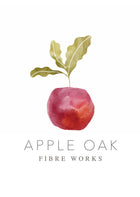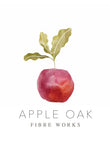


















And then there was the humble Nettle, so often despised for its sting. Nonetheless, it is a treasure. It can be used like Spinach, drank as a healing herbal tea, used for dyeing green and yellow, used in gardening as a pesticide and last but not least it creates fibre like Flax...
The Company:
Made from Himalayan Nettles, wild harvested in Nepal. This yarn is ethically made in Nepal, by a company that is supporting homemakers, women and families to receive a decent income and to enable them to work from home, rather than finding employment abroad.
The yarn:
Untreated and collected in the wild of the Himalayas, this yarn has been hand harvested and naturally processed using a combination of water and wood ash (lye) to break down the outer fibres of the nettle, before it gets spun by hand in Nepal. The colour of the yarn is natural and varies from light grey/beige to brown brown/beige. Available in hank form only and ethically produced. The last two pictures show the yarn woven.
History:
Nettle yarn was once used widely in Europe and was known as the 'Poor man's Linen'. Nettles once rivaled flax and hemp (and later, cotton) as a staple fiber for thread and yarn, used to make everything from heavy sailcloth to fine table linen up to the 17th/18th centuries. "In Scotland, I have eaten nettles," said the 18th century poet Thomas Campbell, "I have slept in nettle sheets, and I have dined off a nettle tablecloth. The young and tender nettle is an excellent potherb. The stalks of the old nettle are as good as flax for making cloth. I have heard my mother say that she thought nettle cloth more durable than any other linen."
Use:
This yarn can be used for knitting, crochet and weaving as well as sewing.
The yarn is a medium size, semi rough and can be stiff at times and is not suitable for fine knitting or crochet work.
The nettle dress is handwoven using the thin nettle yarn by Sofia C. in Sweden. For more info on the dress please get in touch with Sofia directly: wsm.shc@gmail.com
In a nutshell for 100g:
approx. 265m
hand spun
hand harvested in the wild
naturally processed with Wood Ash and water
Origin: Himalaya, Nepal






































